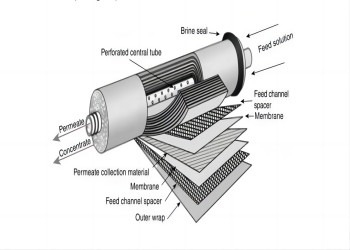Reverse Osmosis Membrane: A Comprehensive Guide from Principles to Applications

Top ro membrane manufacturers X Membrane technology, as an efficient separation and purification technique, finds extensive application in water treatment, food processing, pharmaceuticals, and beyond. This article delves into the working principles of reverse osmosis membranes, their application areas, and their significance in various industries.
1. Working Principles of Reverse Osmosis Membrane
Reverse osmosis membranes operate based on the principles of semipermeable membranes, focusing on molecule size and solubility characteristics. Key processes include:
Selective Permeation: RO membranes allow water molecules to pass through while blocking the majority of dissolved salts, organic molecules, and microorganisms.
High-pressure Driving Force: Typically, high pressure is applied to overcome the osmotic pressure of the solution, facilitating water molecules to reverse osmose and achieve purification and separation effects.
2. Application Areas of Reverse Osmosis Membrane
Dow ro membrane are utilized extensively in several domains, including but not limited to:
Water Treatment: Used for desalination of seawater, purification of drinking water, and treatment of industrial wastewater, effectively removing salts, heavy metals, and organic compounds from water.
Food and Beverage: Applied in food processing to concentrate juices, remove pigments and harmful substances, ensuring product quality and safety.
Pharmaceutical Industry: Employed for drug formulation purification and water quality purification, ensuring drug purity and safety.
Electronics Industry: Utilized in manufacturing ultrapure water and deionized water to ensure production quality of electronic products.
3. Advantages and Challenges of Reverse Osmosis Membrane
Membrane 8040 Membrane 4040 RO membranes offer distinct advantages over traditional filtration technologies:
Efficient Purification: They efficiently remove various pollutants from water, ensuring stable water quality.
Energy Efficiency: Compared to distillation and other traditional methods, RO membranes save energy and costs.
Technological Challenges: Challenges include membrane fouling, high energy consumption, and relatively high costs, necessitating continuous technological innovation to overcome.
4. Technological Trends and Future Outlook
With technological advancements, RO membrane technology continues to evolve. Future trends include enhancing membrane selectivity, reducing energy consumption, lowering costs, and exploring new materials and structural designs to meet broader application demands and environmental challenges.
Conclusion
Filmtec ro membranes, as critical separation and purification technologies, play pivotal roles not only in water treatment but also in various industrial and commercial applications. As technology advances and application scopes expand, RO membranes will continue to play a crucial role in enhancing product quality, environmental protection, and fostering sustainable development.





 Language
Language




 Network Supported
Network Supported